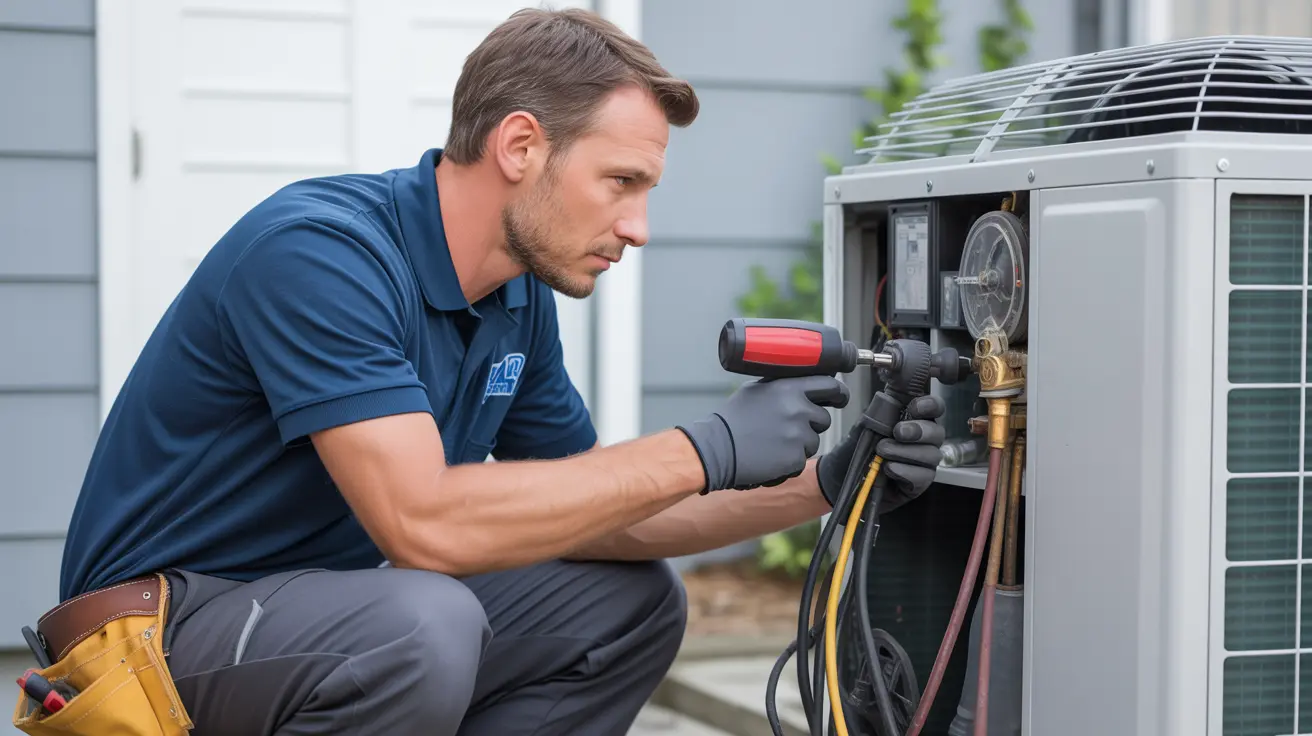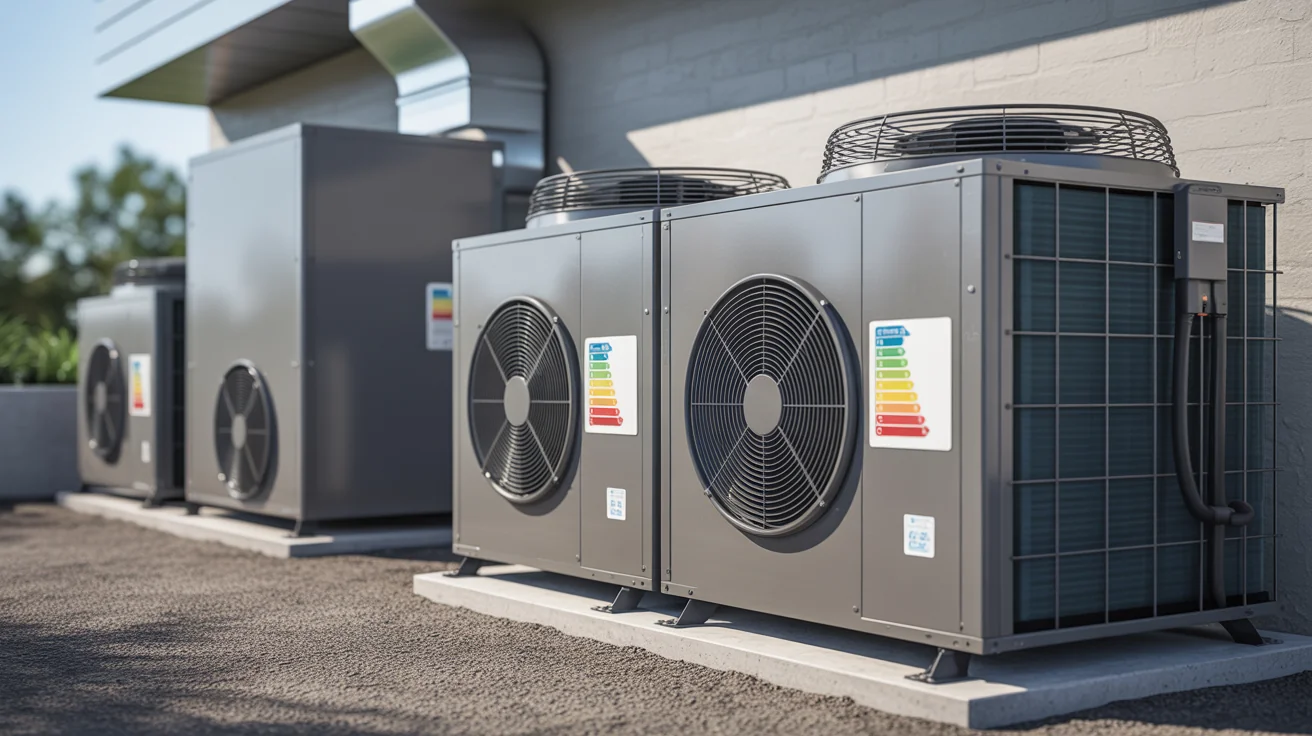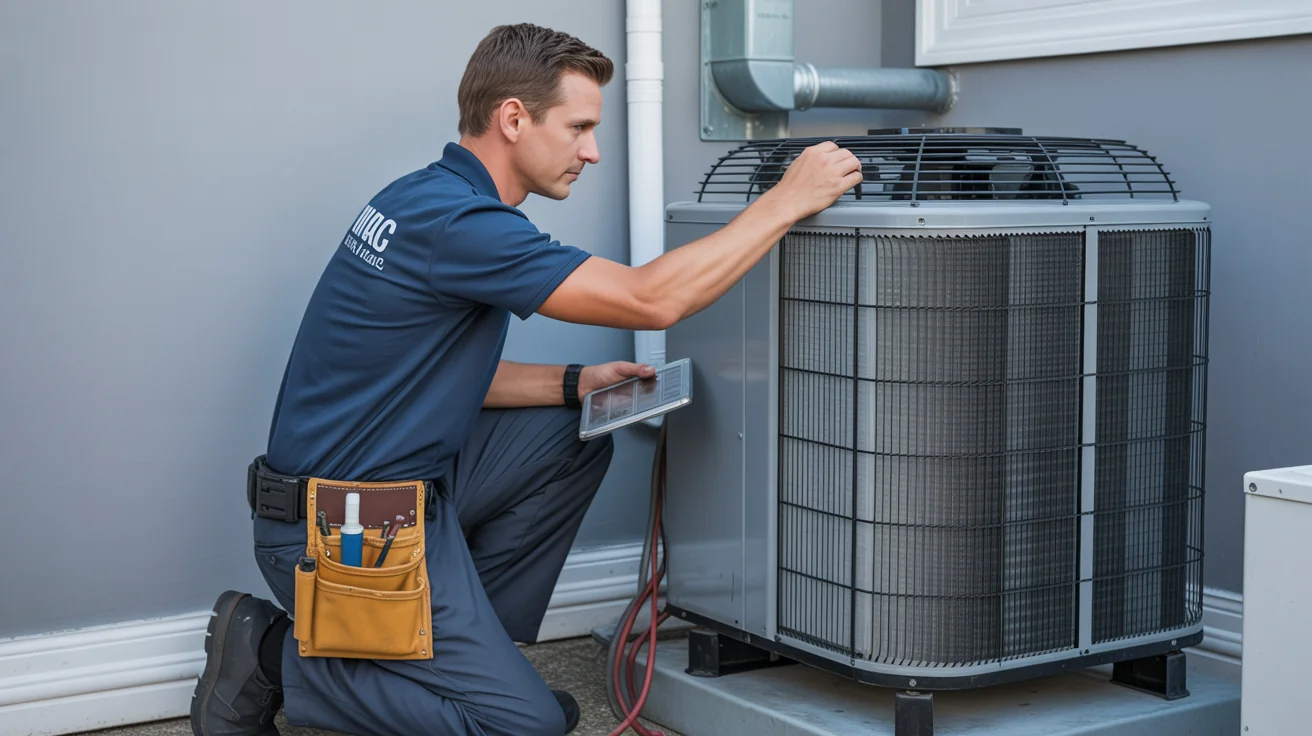Retail RTU Maintenance Guide
Practical rooftop unit maintenance guide for small retail businesses in North Texas. Real maintenance schedules, actual costs, and honest advice from HVAC professionals.

- The Reality of Small Retail RTUs (Nobody Talks About This)
- What Actually Breaks (And When)
- Real Maintenance Schedules That Work
- The Money Part (What It Really Costs)
- DIY vs Professional (The Honest Truth)
- Seasonal Survival in North Texas
- Energy Efficiency (Actual Savings, Not Theory)
- Common Mistakes I See Every Week
+ 4 more sections below...
- The Reality of Small Retail RTUs (Nobody Talks About This)
- What Actually Breaks (And When)
- Real Maintenance Schedules That Work
- The Money Part (What It Really Costs)
- DIY vs Professional (The Honest Truth)
- Seasonal Survival in North Texas
- Energy Efficiency (Actual Savings, Not Theory)
- Common Mistakes I See Every Week
+ 4 more sections below...
Small retail RTU maintenance costs $1,970-$4,370 annually (filters, quarterly service, annual inspection) but prevents $3,000-$15,000 in emergency repairs and replacement—68% of retail RTU failures happen during business hours, costing $500-$2,000+ in lost sales per incident. North Texas retail RTUs run 14-16 hours daily (double residential) in 140°F roof temperatures, requiring monthly filter changes ($35-$85), quarterly professional service ($225-$525), and annual comprehensive inspection ($450-$850). Skipping a $45 filter change causes $890+ emergency repairs; neglecting economizer maintenance wastes $500-$1,500 annually in energy.
Last Tuesday at 2 PM, right in the middle of lunch rush, Maria’s taco shop lost cooling. Temperature inside hit 87 degrees. Her 5-ton rooftop unit—hadn’t been touched in 18 months. Cost her $1,200 in lost sales that afternoon, plus $890 for the emergency repair. The kicker? A $45 filter would’ve prevented the whole mess.
I’ve serviced RTUs for small retail shops across North Texas for twelve years. Strip mall boutiques, family restaurants, dental offices—seen it all. And here’s what nobody tells you: that metal box on your roof is either making you money or burning it. No middle ground.
The Reality of Small Retail RTUs (Nobody Talks About This)
Your rooftop unit works differently than residential systems. It’s handling kitchen grease, customer traffic, door openings every three minutes. Plus, it’s sitting on a flat roof in Texas sun that hits 140 degrees in July.
Most retail RTUs run 14-16 hours daily. That’s double what residential units handle. Yet half the store owners I meet think quarterly filter changes are excessive. Then they wonder why their unit dies at year seven instead of lasting fifteen.
The uncomfortable truth: 68% of small retail RTU failures [[to-verify]] happen during business hours. Not at 2 AM when nobody’s around. Right when you’ve got customers.
What Actually Breaks (And When)
Three weeks ago, serviced a yoga studio’s 7.5-ton Carrier unit in Frisco. Owner swore it was maintained regularly. Found the economizer damper stuck wide open since last winter. They’d been cooling outdoor air all summer. Electric bill? $1,850 in August alone.
Here’s what kills retail RTUs in North Texas:
Filters (monthly disaster potential) Your RTU pulls way more air than you think. That coffee shop with the open door policy? Filter’s shot in three weeks. Hair salon? Two weeks, tops. I’ve pulled filters so clogged they looked like carpet samples.
Belts and bearings (the 3 AM failure) Belt tension matters. Too loose, you lose 30% efficiency. Too tight, bearings fail. Watched a pet store’s unit throw a belt on Memorial Day weekend. Unit ran, just couldn’t move air. Store hit 92 degrees before we arrived.
Condensate drains (the silent killer) North Texas humidity plus commercial cooling equals gallons of water daily. That drain line clogs, water backs up into the unit. Saw a bakery’s entire RTU rust through from inside. Could’ve been prevented with a $12 float switch and quarterly cleaning.
Economizers (money burners) These bring in outside air when it’s cool enough. Except when they stick. Found one clothing store heating their space in winter while the economizer pulled in 38-degree air. Their gas bill that January? $2,400.
Real Maintenance Schedules That Work
Forget what the manual says. Here’s what actually keeps units running:
Monthly (You can do this)
- Check filters. Don’t just look—pull them out. If you can’t see light through them clearly, change them
- Walk the roof (carefully). Look for pooling water, debris, obvious damage
- Check your thermostat settings. Someone always messes with them
Quarterly (Get a pro) Professional service should run $225-$385 per unit. Should include:
- Belt tension adjustment (not just checking)
- Complete coil cleaning (both sides)
- Electrical connection testing
- Refrigerant level check
- Economizer calibration
- Condensate line flush
Annually (Non-negotiable) Full system diagnostic. Costs $450-$650 but catches problems early. One Mexican restaurant skipped this, ended up replacing a compressor for $3,800. Annual inspection would’ve caught the failing capacitor that killed it.
The Money Part (What It Really Costs)
Let’s talk actual numbers from actual businesses:
Small boutique (2,000 sq ft, single 5-ton unit):
- Filters: $35/month
- Quarterly service: $275 x 4 = $1,100
- Annual inspection: $450
- Total annual: $1,970
Quick-service restaurant (3,500 sq ft, two 7.5-ton units):
- Filters: $85/month
- Quarterly service: $525 x 4 = $2,100
- Annual inspection: $850
- Grease hood cleaning impact: $400
- Total annual: $4,370
Dental office (4,000 sq ft, two 5-ton units):
- Filters: $65/month
- Quarterly service: $450 x 4 = $1,800
- Annual inspection: $750
- Total annual: $3,330
Yeah, it’s real money. But emergency compressor replacement runs $3,000-$5,500. New RTU installation? Try $8,000-$15,000.
DIY vs Professional (The Honest Truth)
Some things you should handle yourself. Others… just don’t.
DIY territory:
- Monthly filter changes (save $65-$85 per visit)
- Thermostat programming
- Keeping unit area clear
- Visual inspections
- Clearing visible debris
Don’t even try:
- Refrigerant anything
- Electrical work
- Belt replacement (looks easy, isn’t)
- Economizer adjustment
- Compressor diagnostics
Watched a restaurant owner try to clean his own coils. Used a pressure washer. Bent every single fin flat. Unit couldn’t breathe. That DIY attempt cost him $1,200 in repairs plus a week of poor cooling.
Seasonal Survival in North Texas
Our weather breaks RTUs in specific ways:
Spring (March-May) Pollen clogs everything. Change filters every two weeks. Cottonwood seeds are the worst—they stick to coils like glue. One car dealership ignored this, had complete coil blockage by May. Their showroom hit 84 degrees on a Saturday. Lost three sales that day.
Summer (June-September) Units run constantly. Check belts monthly—heat makes them stretch. Condensate drains work overtime. That musty smell? Your drain’s backing up. Fix it now or face mold later.
Had a clothing store call last August. Their RTU was cycling every three minutes. Turned out the unit was oversized, previous contractor’s mistake. But summer’s the wrong time to find out. They lived with it, uncomfortably, until October.
Fall (October-November) Perfect for major maintenance. Units aren’t stressed, parts are available, contractors aren’t swamped. This is when smart owners handle annual inspections.
Winter (December-February) Heat exchanger cracks show up now. Carbon monoxide is real. Get it checked. Also, economizers freeze open if not maintained. Nothing like heating your store while arctic air pours in.
Energy Efficiency (Actual Savings, Not Theory)
Efficient RTU operation isn’t about fancy upgrades. It’s about basics.
Clean coils transfer heat 30% better than dirty ones. Proper refrigerant charge saves 20% on cooling costs. Correct belt tension improves airflow 15%. This isn’t marketing—I’ve measured it with real equipment on real units.
One print shop in Plano. Their 10-ton unit was pulling 14.2 amps more than spec. Why? Dirty condenser coils and low refrigerant. Fixed both, electric bill dropped $340 monthly. Paid for the service in three weeks.
But here’s what vendors won’t say: that high-efficiency unit they’re pushing? Might not make sense. If your current RTU is 10 years old but maintained, upgrading from 11 SEER to 16 SEER saves maybe $800 yearly. New unit costs $12,000 installed. Do the math.
Common Mistakes I See Every Week
“It’s cooling fine” Just because it’s running doesn’t mean it’s efficient. Saw a sandwich shop’s unit running 24/7. Still couldn’t keep up. Three pounds low on refrigerant, fighting a losing battle.
Ignoring weird noises That squealing isn’t going away. It’s a belt about to snap or a bearing about to seize. One fitness studio ignored a grinding noise for two months. Motor seized during a Saturday yoga class. Full of customers.
Cheap filters Those $8 filters don’t filter. They’re basically screens. Spend $25-$35 for pleated filters. Your coils will thank you. Your electric bill too.
Multiple thermostats fighting Coffee shop had three thermostats for two units. Nobody knew which controlled what. Units fought each other constantly. Set one to heat, other to cool. Chaos.
When to Call for Help (940) 390-5676
Stop googling and call when:
- Unit runs but doesn’t cool
- Ice anywhere (on lines, coils, anywhere)
- Water where it shouldn’t be
- Electrical burning smell
- Unusual noises that persist
- Electric bills jump 30% or more
Last month, bakery owner called about “slightly warm” store. Arrived to find compressor pulling 47 amps (should be 28). Thing was days from catastrophic failure. Could’ve burned the building down. Don’t wait.
The Bottom Line
Your RTU isn’t complicated. It’s just neglected. Every small retail owner thinks they’re saving money skipping maintenance. They’re not. They’re gambling with their business.
That taco shop I mentioned? Maria now pays $285 quarterly for maintenance. Her last emergency? Two years ago. Her competing taco place down the street? They’re on their third compressor this year. Still think maintenance is expensive?
RTUs are workhorses. Treat them right, they’ll run fifteen years easy. Ignore them, you’ll be equipment shopping by year seven. And trust me, you don’t want to RTU shopping in July when your store’s 90 degrees and customers are walking out.
Need RTU service now? Jupitair HVAC handles commercial maintenance across North Texas. Call (940) 390-5676. We actually answer, even on weekends.
Quick Reference: Your RTU Maintenance Checklist
Monthly (DIY):
- Change filters (or check if reusable type)
- Clear debris from around unit
- Verify thermostat settings
- Listen for unusual sounds
- Check for water/rust/damage
Quarterly (Professional):
- Complete coil cleaning
- Belt tension adjustment
- Refrigerant pressure check
- Electrical connection test
- Economizer operation verification
- Condensate drain cleaning
- Motor bearing lubrication
Annually (Professional):
- Comprehensive system diagnostic
- Heat exchanger inspection
- Combustion analysis (gas units)
- Complete electrical testing
- Refrigerant leak check
- Control calibration
- Energy efficiency assessment
Emergency Signs (Call Immediately):
- No cooling during business hours
- Electrical burning smell
- Excessive ice formation
- Water leaking into store
- Circuit breaker tripping repeatedly
- Unit cycling rapidly (every few minutes)
Remember: Your RTU doesn’t care about your busy season. It’ll fail when it wants to. Regular maintenance is insurance against the worst possible timing.
Sources & References
The RTU maintenance standards, cost data, and energy efficiency information in this article are based on the following authoritative sources:
- U.S. Department of Energy - Commercial HVAC - Commercial rooftop unit efficiency guidelines
- ASHRAE Commercial Maintenance Standards - Industry standards for RTU maintenance
- ENERGY STAR Commercial HVAC - High-efficiency commercial equipment standards
- EPA Refrigerant Regulations - Small business refrigerant handling requirements
- ACCA Commercial Maintenance - Professional maintenance procedures for commercial equipment
Last Updated: December 2025
Need Professional HVAC Service?
Our certified technicians are ready to help with any HVAC needs in North Texas




